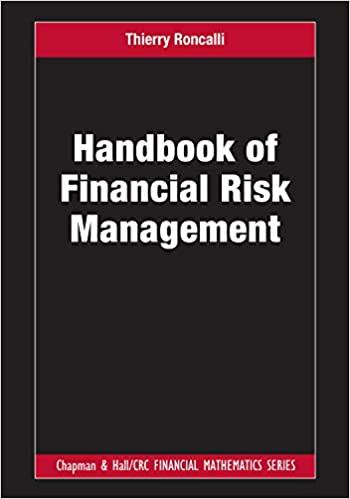Answered step by step
Verified Expert Solution
Question
1 Approved Answer
Here are simplified financial statements for Phone Corporation in a recent year: INCOME STATEMENT (Figures in $ millions) Net sales $ 13,000 Cost of goods
| Here are simplified financial statements for Phone Corporation in a recent year: |
| INCOME STATEMENT (Figures in $ millions) | |
| Net sales | $ 13,000 |
| Cost of goods sold | 3,960 |
| Other expenses | 4,037 |
| Depreciation | 2,458 |
|
| |
| Earnings before interest and taxes (EBIT) | $ 2,545 |
| Interest expense | 675 |
| Income before tax | $ 1,870 |
| Taxes (at 30%) | 561 |
| Net income | $ 1,309 |
| Dividends | $ 856 |
| BALANCE SHEET | |||||||||
| (Figures in $ millions) | |||||||||
| End of Year | Start of Year | ||||||||
| Assets | |||||||||
| Cash and marketable securities | $ | 87 | $ | 156 | |||||
| Receivables | 2,282 | 2,450 | |||||||
| Inventories | 177 | 228 | |||||||
| Other current assets | 857 | 922 | |||||||
| Total current assets | $ | 3,403 | $ | 3,756 | |||||
| Net property, plant, and equipment | 19,953 | 19,895 | |||||||
| Other long-term assets | 4,196 | 3,750 | |||||||
| Total assets | $ | 27,552 | $ | 27,401 | |||||
| Liabilities and shareholders equity | |||||||||
| Payables | $ | 2,544 | $ | 3,020 | |||||
| Short-term debt | 1,409 | 1,563 | |||||||
| Other current liabilities | 801 | 777 | |||||||
| Total current liabilities | $ | 4,754 | $ | 5,360 | |||||
| Long-term debt and leases | 7,516 | 7,191 | |||||||
| Other long-term liabilities | 6,158 | 6,129 | |||||||
| Shareholders equity | 9,124 | 8,721 | |||||||
| Total liabilities and shareholders equity | $ | 27,552 | $ | 27,401 | |||||
| Calculate the following financial ratios for Phone Corporation: (Use 365 days in a year. Do not round intermediate calculations. Round your percentage answers "Return on equity", "Return on assets", Return on capital" and "Operating profit margin" to 2 decimal places and the rest to 2 decimal places.) |
|
| |||
| a. | Return on equity (Use average equity.) | % | |
| b. | Return on assets (Use after-tax operating income and average assets.) | % | |
| c. | Return on capital (Use after-tax operating income and average capital.) | % | |
| d. | Days in inventory (Use beginning inventory.) | days | |
| e. | Inventory turnover (Use beginning inventory.) | ||
| f. | Average collection period (Use beginning receivables.) | days | |
| g. | Operating profit margin (Use after-tax operating income.) | % | |
| h. | Long-term debt ratio (Use end of year values.) | ||
| i. | Total debt ratio (Use end of year values.) | ||
| j. | Times interest earned | ||
| k. | Cash coverage ratio | ||
| l. | Current ratio (Use end of year values.) | ||
| m. | Quick ratio (Use end of year values.) | ||
|
| |||
Step by Step Solution
There are 3 Steps involved in it
Step: 1

Get Instant Access to Expert-Tailored Solutions
See step-by-step solutions with expert insights and AI powered tools for academic success
Step: 2

Step: 3

Ace Your Homework with AI
Get the answers you need in no time with our AI-driven, step-by-step assistance
Get Started


